Calendars Support Gospel of James
by John P. Pratt
6 Sep 2021, 1 Wind (SR), 1 Birth (UM).
©2021 by John P. Pratt. All rights reserved.
Index,
Home
Sacred Calendars confirm birth date of the Virgin Mary provided in the rejected Gospel of James.
The Gospel of James (later called Protevangelium) was regarded in the early Christian church as an authentic account of the births of both the Virgin Mary and of Jesus Christ, attributed to James, the brother of Christ. Although it was rejected from the Bible by the Council of Nicea, it was considered canonized scripture in the ancient Greek church.[1] The reason for rejecting this book was that the Church did not approve of what was reported in the account, not because it was found to be fraudulent. Thus, it is not found in the Bible.
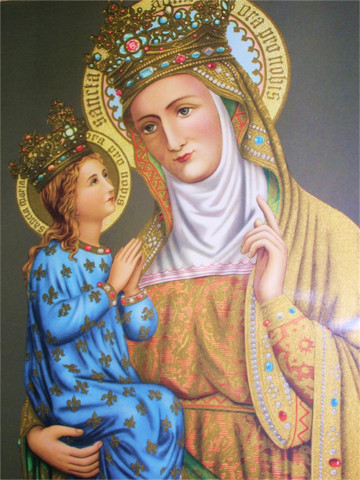 |
Anna and daughter Mary.
The book was included in a collection of ancient Christian manuscripts from Constantinople which came in 1731 to William Wake, the Archbishop of Canterbury,[2] who saw such worth in these books which had been rejected from the Bible, that he translated them all into English. His work is now readily available in paperback.[3] Parts relevant to this article are provided herein.
This gospel provides the approximate month of the birth of Mary. The exact date of her birth has been known in my work for the last seven years as having been Sun 5 Dec 19 BC, from the clear testimony of sacred calendars.[4] That date is consistent with the gospel account, providing support for this rejected book. This article summarizes relevant parts of the book and also some of the historical events which it adds to our knowledge, if accepted.
1. What is Scripture?
Before looking at the evidence supporting the Gospel of James, let us consider what books should be considered scripture. Does a book have to be perfect to be scripture, that is, true in every detail? When the authors of scripture wrote their books, did they know that someday many believers would consider their books to be "infallible"? Does a book have to contain revelations from the heavens? The four gospels contain somewhat different accounts of various events, which shows they are independent of each other. If scriptures do contain mistakes of men, should we therefore reject their accounts of sacred events.
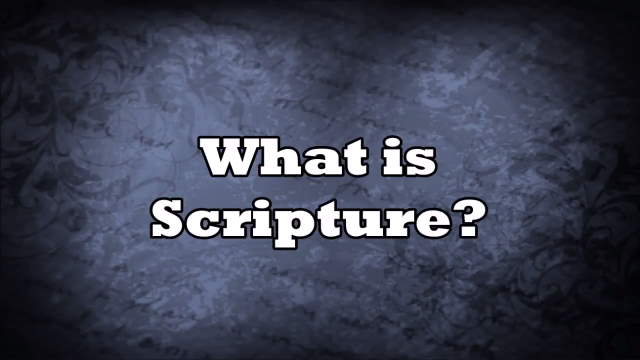 |
Are the scriptures infallible?
Many of the apocryphal books of the early church are called "pseudepigrapha", meaning "false writings". They refer to books claiming to be written by Enoch, Isaiah, or other accepted prophets or authorities, but are in fact believed to be frauds, meaning that they are were not written by those authors at all. So an important question is, was the Book of James actually written by James, the brother of Christ? If it was, then it is "authentic" whether or not it might contain some errors. That is of much more importance to know than whether or not it might contain an unintentional error, causing it to be rejected by someone demanding perfection. It is interesting that in the several collections of hundreds of early Christian manuscripts, it has been my experience that there is not one book for which the scholarly author of that collection states that it is his opinion that it appears to be authentic, having been rejected by mistake or for faulty reasons! This article is one of very few which propose that the Book of James is totally authentic!
An interesting point can be made that scholars are quick to find reasons to reject all of these books. For example, the Gospel of James contains some verbatim quotes from both the Gospel of Luke and of Matthew, so they reason that the Gospel of James must have been written after both of those books, having been copied from them. If so, they conclude that the author could not be James, who died before they believe those books were written. They do not appear to even consider the possibility that the Gospel of James might have been written first. Much of the reasoning used to reject this book is faulty indeed!
It is logical that James, the older brother of Christ, might want to write a book about his stepmother Mary and her parents, because the birth of Mary was miraculous and worth knowing about. James did not accept Jesus as the Messiah until he had a vision of the Savior after the Resurrection, after which he was fully converted. Moreover, it was revealed to the apostles that James should be the President of the Church (1 Cor. 15:7), centered in Jerusalem, which is why they immediately accepted him as their leader (Acts 15:13).[5] The task of the apostles was to go into all of the world and teach the gospel, but James, called James the Just, was to preside over the Church (Mat. 28:19-20).
2. Mary's Early Life
The following is my paraphrasing and condensing of part of the Gospel of James which treats Mary's parentage and birth. Verse numbers and quotations are from the version referenced in note 3.
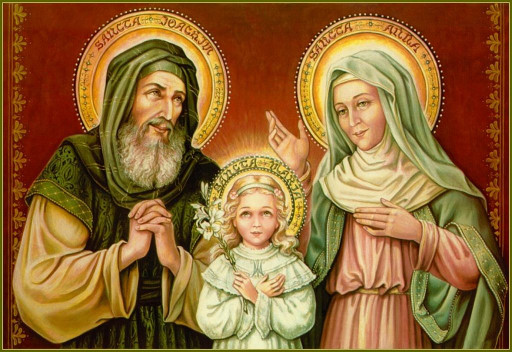 |
Joachim, Anna, and daughter Mary.
Mary's father Joachim was a righteous man of the tribe of David (v 9:4), whose wife's name was Anna. They both were middle aged, but had not been blessed with any children. One year when he attended the Feast of Dedication[6] in Jerusalem and offered his gifts, the priest told him that they would not be accepted of the Lord because he was childless. That upset Joachim and he did not return home to Anna, but decided to fast in the wilderness for forty days to pray to have a child. During that time, he remembered that many great couples had their firstborn late in life, such as Abraham, and in such cases the child was especially blessed. At the end of the forty days, an angel appeared to him and told him to return to Jerusalem because the Lord had heard his prayer and his wife would be blessed with a child, which he immediately believed.
Meanwhile, Anna had feared that her husband was dead and began to mourn both her widowhood and childlessness. At length, an angel appeared to her about the time of another holy feast and told her that she would have a very blessed child, who would "be spoken of in all the world" (v 4:1). Then angels told her to go to Jerusalem because Joachim was returning. Joachim met Anna at a gate of Jerusalem, and they rejoiced. Joachim held a big feast to celebrate, so different from Zacharias who did not believe that his aged wife could bear a son! Nine months later she gave birth to Mary (v 5:6).
Thus, much information was supplied in that account about the time of year in which Mary was born, but what about the year of Mary's birth? The account states that at the age of three, Mary was taken to the temple to be raised there. When she arrived, the high priest prophesied, "Mary, the Lord God hath magnified thy name to all generations, and to the very end of time by thee will the Lord show his redemption to the children of Israel" (v 7:4). Thus, the priests knew that she was blessed indeed.
When Mary was 12 (or 14[7]), the priests decided it would be best for Mary to leave the temple to be betrothed. Knowing how special she was, they asked the high priest to seek guidance in the holy of holies on how to choose . He did so, and angel appeared to him stating that all widowers should bring their staffs to him, by which the right husband would be chosen for her. A decree went forth, and Joseph, an aged widower with several children, submitted his staff. His was indicated by a miracle, and the high priest declared, "Joseph, thou art the person chosen to take the Virgin of the Lord to keep her for him" (v 8:12). Joseph agreed to marry her, even though hesitant for fear of ridicule because of their great age difference.
Then the account of the visit of the angel to Mary and her visit to her relative Elizabeth is similar to that in Luke. This account adds that her age at that time was 14 (or 16) (v 9:23). If Mary was indeed born on Sun 5 Dec 19 BC and Jesus born on the eve of Thu 6 Apr 1 BC, then Mary was 17 years old His birth and 16 years old at her betrothal to Joseph. As explained in note 6, other accounts give her age at leaving the temple as being 14 or 15 years old, rather than 12, so they appear to be more correct, because that would be consistent with betrothal at age 16. As discussed in Section 1, an "authentic" record does not mean "flawless".
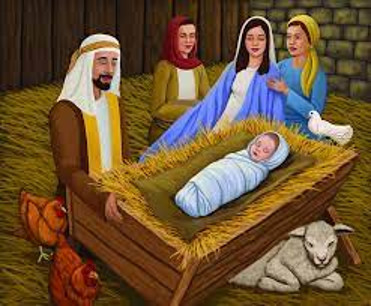 |
Salome and midwife at nativity.
Joseph was a carpenter who built homes, and he was called away to another city to build, so soon after he was betrothed to Mary, he left her for six months for his work in another city. It was during his absence that the angel appeared to her and announced that she would become the mother of the Son of God. It was also during that time that she visited Elizabeth.
When Joseph returned, he found her expecting a baby, and was distraught with himself for having left her so long and not having preserved her virginity (v 10:3). He allowed her to explain what happened, but he then felt the need to have the betrothal annulled. Then an angel appeared to him in a dream and verified her story and told him to go ahead and marry her because he had been chosen to be the legal father of her son, who would be named Jesus and save his people from their sins.
When they were near Bethlehem, the time came for the babe to be born, Joseph found a midwife to deliver the child. When the time came, the cave which he had found was filled with so much light that nothing could be seen. When the light subsided, Mary was holding her newborn son in her arms. There was no appreciable time for the birth to occur as usual, but was all miraculous.
When the midwife was leaving she encountered Salome[8] and told her of the miracle. Salome, a young woman who lived with her parents (v 14:23), said she had to see this for herself. She was allowed to verify that Mary was still a virgin! But when she withdrew her hand, it had withered, "ready to drop off" (v 14:21). An angel then told Salome to hold the babe, which she did, and her hand was healed. She then commanded not to tell of these miraculous events until he should come to Jerusalem.
3. Sacred Calendars
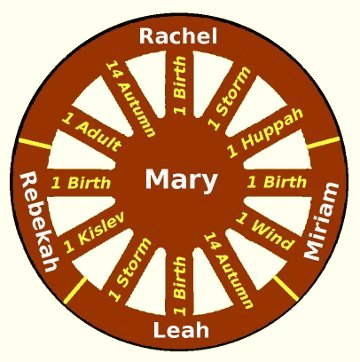 |
The spokes are identical birth or death holy days on sacred calendars.
Considering that proposed history in the light of sacred calendars leads to an excellent match of the Gospel of James to the date proposed in my work for the birth of the Virgin Mary, which is Sun 5 Dec 19 BC.
Counting back from that date for the birth of Mary to the prior Feast of Dedication, when the priest rejected the gift of Joachim, the likely day for that would have been on Sat 12 Dec 20 BC, about the middle of the feast, which is also called the Festival of Lights or Hanukkah. Interestingly, that afternoon was 1 Father on the Priest Calendar, meaning "Father of (approved by) the Lord". The Priest day was also 1 Father when the angel later appeared to Zacharias, announcing that he would also be a father in his old age of a chosen son.[8] Thus, both dates apparently symbolized that they would be chosen fathers.
Allowing about two months for Joachim's deliberation and fast, as well as for Anna's mourning, the two would likely have met in Jerusalem at the time of the Feast of Esther, which would have been on or about Thu 25 Feb 19 BC, being the second feast mentioned in the account. The birth of Mary about nine months later on Sun 5 Dec 19 BC is a superb fit with that scenario. Thus, the witness of sacred calendars matches very well the history in the Book of James! The fact that that gospel account agrees with the date derived by sacred calendars is a way of each testifying of the accuracy of the other.
4. Conclusion
The Gospel of James, also called the Protevangelium, was accepted by early Christians as authentic and having been written by James, the brother of Christ. Later it was rejected because of what it taught, not because it was a fraud. This article proposes that sacred calendars support details of the date of the birth of the Virgin Mary, which is specified with surprising detail in the account.
A strongly supported date was proposed seven years ago in my work that her birth was on Sun 5 Dec 19 BC. The account states that her birth was some nine months after a Hebrew feast day, which in turn was about 50 days after the Feast of Dedication. The previous Feast of Esther fell that year on Thu 25 Feb 19 BC, just over nine months before the proposed date for Mary's birth. In turn, that feast was some 50 days after the Feast of Dedication in mid-December 20 BC, just as described in the account.
It is concluded that the chances of the Gospel of James recording the time of Mary's birth to within a week or two of what is predicted by sacred calendars can be considered evidence that the accounts are correct, because the probability of that being a random chance coincidence is less that 1/20, which statisticians consider significant. It is wonderful when science can be used as a witness to confirm scriptures and add to the glory of God!
Notes
- Montague Rhodes James, The Apocryphal New Testament (Oxford: Clarendon Press, 1924), p. 38: "Origen mentions the Book of James ... and shows us that the book is as old as the second century." The introduction to it in the Lost Books of the Bible (see note 3, p. 24) states: "The allusions to it in the ancient Fathers are frequent, and their expressions indicate that it had obtained a very general credit in the Christian world.... Postellus asserts that it was publicly read as canonical in the eastern churches, they making James the author of it." Although virtually all modern Bible scholars reject this book, they do not explain how a fraud was accepted as authentic so soon after the events described. As for the date it was written, at the end James says he wrote it after hiding out in the desert until the death of Herod (Agrippa in AD 44). His hiding would have been caused by Herod having executed James, son of Zebedee, at which time the Virgin Mary and Salome and others fled to Britain and France, respectively (see my Mary Magdalene's Family"). Thus, one incentive for James to write this history would be that both Mary and Salome were gone, so there would be a need to record what he remembered about them. Luke's account of the birth of Jesus was clearly gleaned from Mary before she left, because it has detailed information known only to her, about the shepherds, the inn, which James did not always get correct, such as placing the inn after the birth in the cave. That mistake shows that he probably had not yet seen Luke's account. On the other hand, James includes details about his father Joseph, which no one else had recorded, and also of Salome's testimony, which he would have heard from her. Most believing scholars agree that of the four gospels, Matthew was written first, Mark second, Luke third, and finally John. Eusebius placed the writing of Matthew in AD 41 (see When were the Four Gospels Written?"), which James had seen because he apparently quotes it concerning the wise men, but which contains only Joseph's brief summary of the birth of Jesus, barely including Mary's name. That would have given James yet another incentive to include what he could about the Virgin Mary and her parentage.
- See "William Wake" in Wikipedia: "These manuscripts came from Constantinople to England about 1731."
- There are many reprints of the entire collection for a nominal price: Lost Books of the Bible and the Forgotten Books of Eden. That is the version used in this article. A very similar public domain translation, with different verse numbers, is found at gospels.net/infancyjames.
- Pratt, John P., "The Virgin Mary's Birth and Death Dates" (6 Feb 2014) gives the birth date of the Virgin Mary as the holy day 1 Kislev on the Hebrew Calendar, being Sun 5 Dec 19 BC (Gregorian), which day was holy on 9 sacred calendars! That day was 1 Wind (SR) and 1 Birth (Venus), the same as the birth date of Miriam, sister of Moses. 1 Birth (V) was also the birth date of Rebekah, Leah, and Rachel, with Rebekah also having been born on 1 Kislev.
- It is often assumed that James the Just, the brother of Christ, was the presiding bishop of the early church, but some reflection shows that he was actually the head of the Church. When a dispute arose about circumcision, there was a meeting where Paul and other apostles spoke, but it was James who made the ruling which settled the question (Acts 15:13). He was not just the bishop of a city, nor the presiding bishop, but he settled the dispute between apostles, which everyone present accepted. That is a task reserved for the Church president. Remember that it is the duty of the president to stay at Church headquarters, whereas apostles were to go into all the world to open new branches (Mat. 28:19).
- The Gospel of James states only that it was "a feast", but the Gospel of the Birth of Mary, which is attributed to Matthew, states that was "the feast of the dedication" (Mary 1:7), found on p. 18 of the reference in note 3. As for "middle aged", it states in v. 5 on that page that they were childless after twenty years.
- The Gospel of the Birth of Mary (found in the book referenced in note 3, p. 21) states: "So that when at length she arrived at her fourteenth year" (Birth of Mary 5:3) the decree to leave the temple was given to the virgins. In the Discourse of Cyril of Jerusalem, it is written, "Mary was born, dedicated in the temple at three years old, and brought up there till she was fifteen." M.R. James, op. cit., pp. 87-88.
- This account may clear up just who the Salome is who is mentioned in the Gospels as a disciple of Christ, if they are one and the same. James gives her name as though the reader should recognize it. Salome the disciple is listed among many women who stood far from the cross at the Crucifixion (Mark 15:40-41). She was young at the time of the birth of Christ, and could have become a lifelong friend of the Virgin Mary after their having met at the birth of Jesus. One argument that Salome of the nativity and Salome the disciple are identical is that she was commanded not to testify of experience until the ministry of Jesus. The disciple Salome is often identified as being the mother of James and John for the reason that in the parallel verse in Matthew, the "the mother of Zebedee's children" is listed in the same place as Salome in Mark's version (Mat. 27:55-56). That is, however, only an assumption because both accounts say that many women were present. One non-canonical account lists the two separately: "And there were in the distance all the acquaintance of Jesus standing, and the women that came with Him from Galilee, those that followed Him and ministered. One of them was Mary Magdalene; and Mary the mother of James the little and Joses, and the mother of the sons of Zebedee, and Salome, and many others which came up with Him unto Jerusalem" (Diatessaron 52:21-23), quoted in "Salome (disciple)" in Wikipedia.
- This parallel between the births of Mary and of John the Baptist to their otherwise barren mothers may be a clue to how Elizabeth was a relative of Mary. The Bible states that she was Mary's "cousin" (Luke 1:36), which is the same word used in the Gospel of James. Elizabeth was of the seed of Levi (Luke 1:5), so just how was she related to Mary? If a woman married into another tribe of Israel she would lose her inheritance in her native tribe and become a member of that tribe, so it was not often done. Mary is of the tribe of Judah because her father Joachim is, so it must be through her mother that she is related to Elizabeth. Anna might have been from the tribe of Levi, for Levites had no inheritance, but circulated among all tribes. If so, perhaps Anna and Elizabeth were sisters, which would make Elizabeth be Mary's aunt. While most modern translations of Luke say "relative" instead of "cousin", the Living Bible translates Luke 1:36 thus: "Furthermore, six months ago your Aunt Elizabeth ... became pregnant in her old age!" See Eight Translations of the New Testament (Wheaton, IL: Tyndale, 1985), p. 386.





